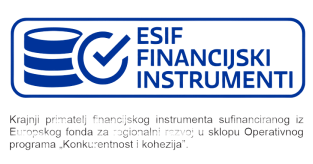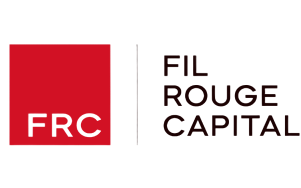

A brew house’s leftovers are not trash, they are future textiles waiting for a passport stamp out of the mash tun.
Why brewery waste deserves a second life
Each 500 ml glass of beer generates roughly 100 g of spent grain. Global breweries produce more than 39 million t of this fibre every year, most of which ends up in low value animal feed or landfill.
Bold takeaway, redirecting spent grain into leather saves agricultural land and cuts methane from decomposing biomass.
Stage 1: Milling mashing and the birth of spent grain
Brewers crush malted barley then soak it in hot water to pull out sugars. Once the sweet wort is drained away, what remains is a protein and fibre rich husk that is still 80 percent moisture. Timing matters, as hot grain can sour within hours.
Bold takeaway, collecting grain fresh from mash guarantees higher fibre integrity for later processing.

Stage 2: Dewatering and stabilising the fibre
The wet grain first passes through screw presses that squeeze out excess water. Target moisture drops from 80 percent to about 60 percent. Quick cooling follows, arresting microbial growth and locking in colour.
Bold takeaway, early moisture control prevents mould and keeps the fibre colour warm rather than grey.
Stage 3: Micronising and protein extraction
A hammer mill turns coarse husks into a fine powder while an aqueous alkali bath pulls out residual proteins. These proteins later return as bio fillers in Beer Skin’s resin, closing the loop internally.
Bold takeaway, using barley proteins inside the resin boosts bond strength without petrochemicals.

Stage 4: Blending with bio polyurethane
The dried malt powder mixes with a 55 percent bio based polyurethane dispersion derived from corn and castor oil. High shear blending disperses particles evenly while keeping VOCs near zero thanks to a water carrier.
Bold takeaway, water borne chemistry slashes solvent emissions versus traditional PU coatings.
Stage 5: Casting pressing and grain emboss
The blended slurry is cast onto a release paper, semi dried, then pressed under 120 °C and 150 bar. A steel plate embosses a subtle natural grain. The sheet cures for 24 hours before demoulding, producing rolls up to 1.4 m wide.
Bold takeaway, controlled heat and pressure fuse fibre and resin into a single flexible layer without extra adhesives.

Stage 6: Post finishing and colouration
Sheets move through a finishing line where water based top coats add scratch resistance. Pigments meet REACH and OEKO-TEX class I standards. The result is a uniform 0.9 mm thickness ready for cutting.
Bold takeaway, zero chrome and azo free pigments keep skin contact safe, even for kids’ goods.
Stage 7: Pattern cutting sewing and hardware
Designers treat Beer Skin like mid weight cowhide. Rotary blades cut clean edges, while standard leather needles handle sewing. Only minor tension tweaks are needed because the sheet lacks natural stretch marks.
Bold takeaway, swapping from hide to Beer Skin requires no new machinery for bag or shoe factories.

Environmental impact snapshot
Category | Beer Skin per m² | Cowhide leather per m² |
|---|---|---|
CO₂e emissions* | 6.4 kg | 110 kg |
Water use | 40 l | 17 000 l |
Land occupation | 0 | 4.9 m² grazing |
*Cradle-to-gate LCA commissioned by Sabant, third-party validation expected 2025 Q4. until audit release.
Bold takeaway, Beer Skin shows an order-of-magnitude carbon reduction against chrome tanned hide.
Mechanical performance compared to hide
Beer Skin reaches 28 000 Martindale abrasion cycles before breakthrough and stays flexible to −20 °C. Full grain cowhide averages 50 000 cycles but stiffens at −30 °C. Beer Skin’s tensile strength sits at 34 MPa versus hide’s 35-40 MPa.
Bold takeaway, Beer Skin sacrifices little durability while halving weight and carbon.
End of life options
Current sheets downcycle into acoustic felt through mechanical shredding. Research into polyurethane depolymerisation could create new resin feedstock, closing the loop further. Pilot scale trials are underway in 2025.
Bold takeaway, Beer Skin already outperforms hide on emissions, and next recycling breakthroughs will widen the gap.

Internal links to deepen your material journey
The original lab story unfolds in our detailed science behind Beer Skin post where tensile data and microscope images reveal the microstructure.
To see Beer Skin in action, stroll through the playful RAW BAG beer skin handbag collection that turns science into street style.
Brewers and designers collide in the collaborative Sabant Klisab gin skin collaboration showing how the same tech scales beyond grain to gin botanicals.
If you want the macro picture, our impact of sustainable materials on the environment article benchmarks Beer Skin against nine other alternatives.
For a step-by-step look at converting distillery waste, read the gin to jacket lifecycle which parallels much of the process described here.
Frequently asked questions
Does Beer Skin smell like beer? No. All volatile hop and malt compounds evaporate during drying and curing.
Can Beer Skin get wet? The PU matrix is water resistant. Prolonged saturation may soften sheets until dry.
Is it vegan? Yes, no animal inputs occur at any point in production.
Can it be dyed at home? Surface dyes struggle to penetrate the top coat, factory pigments give best results.
Is it food safe? It is not intended to contact food directly despite its origins.
Bold takeaway, Beer Skin behaves like premium PU coated fabric, not like a pub floor.
Care and maintenance tips
Wipe dust weekly with a damp cloth.
Use pH-neutral soap for spot cleaning.
Condition every six months with silicone free cream.
Avoid prolonged folding to prevent creases.
Store bags stuffed with acid free paper to maintain shape.
Bold takeaway, treat Beer Skin as you would high quality faux leather to maximise lifespan.
Design opportunities
Beer Skin’s uniform thickness allows laser cutting for intricate patterns. The barley fibre subtly visible under surface pigments creates natural depth that designers highlight with translucent dyes.
Bold takeaway, consistent grain and colour open doors for scalable production lines beyond artisan batches.
Conclusion
From barley mash to boutique bags, Beer Skin rewrites leather’s origin story without compromising on feel or strength. By tapping an abundant waste stream, swapping in water based chemistry and designing for recyclability, the brew to bag journey shows how circular thinking can tastefully disrupt fashion.
Bold takeaway, sustainable luxury is brewing, and every empty pint glass is part of the supply chain.










.png&w=3840&q=75)







